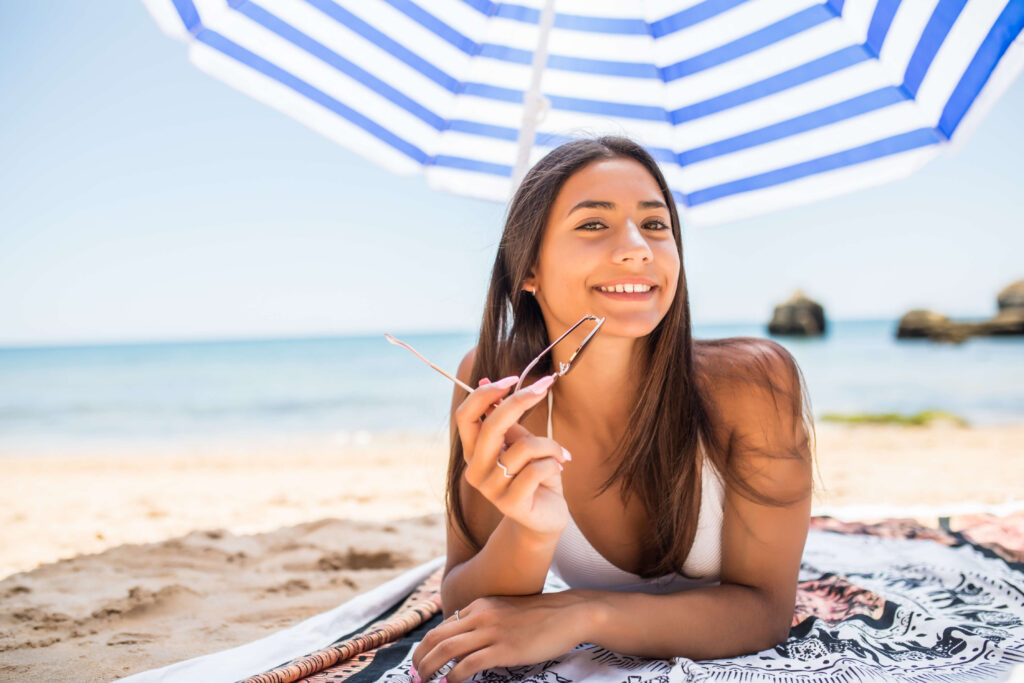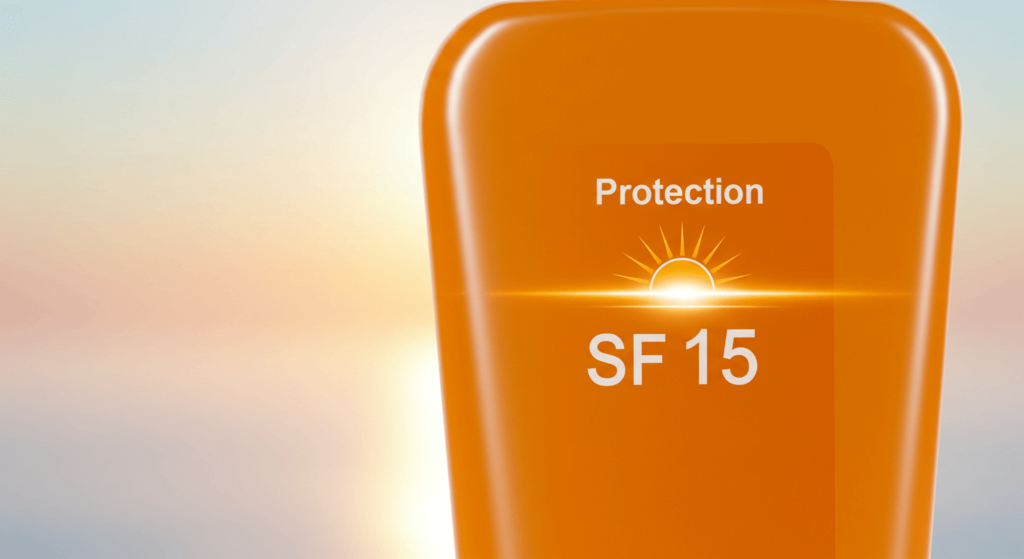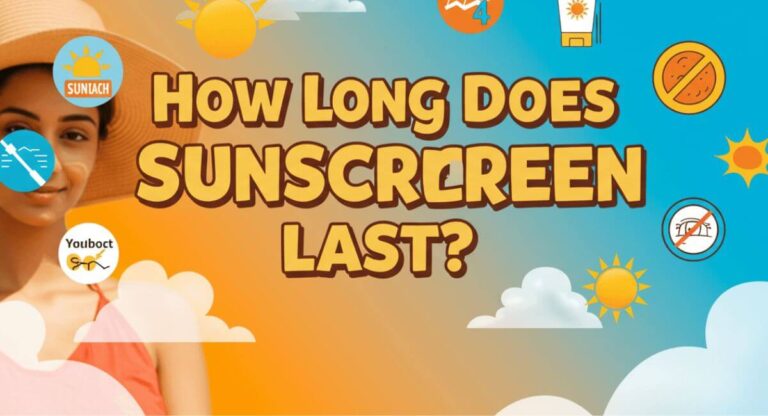Is SPF 15 Enough for sun protection? What the Best Dermatologists Say
The Sun Protection Dilemma I Faced Every Morning
I used to stand in front of my bathroom mirror each morning, squinting at the tiny SPF number on my moisturizer bottle and wondering: Is SPF 15 Enough for sun protection? Like many of you, I’ve heard conflicting advice—some dermatologists swear you need SPF 50 or higher, while others suggest that SPF 15 provides adequate protection for daily use.
After a mild sunburn during what I thought was a well-protected beach day last summer, I decided to dive deep into the science of sunscreen and consult with leading dermatologists to settle this question once and for all. What I discovered about SPF 15 and proper sun protection might surprise you, as it certainly surprised me.
In this comprehensive guide, I’ll share everything I’ve learned about whether SPF 15 is truly sufficient for everyday sun protection, what dermatologists actually recommend, and how to ensure you’re keeping your skin safe year-round.
Understanding SPF: Beyond the Numbers
Before we dive into whether SPF 15 is sufficient, I think it’s important to understand what SPF actually means. SPF stands for Sun Protection Factor, but the number doesn’t tell the whole story.
What SPF Really Measures
SPF primarily measures protection against UVB rays—the ones responsible for sunburn. The number indicates how much longer you can stay in the sun before burning compared to wearing no sunscreen at all. So technically, SPF 15 means you can stay in the sun 15 times longer than you could without protection before burning.
Dr. Jennifer Davis, a board-certified dermatologist I consulted, explained it this way:
“SPF is not a perfect percentage system. SPF 15 blocks about 93% of UVB rays, SPF 30 blocks about 97%, and SPF 50 blocks about 98%. The jump from no sunscreen to SPF 15 is actually the biggest improvement in protection.”

UVA vs. UVB Protection
One crucial factor many people overlook is that the SPF number primarily refers to UVB protection, not UVA. UVA rays penetrate deeper into the skin and contribute to premature aging and skin cancer, even without causing visible sunburn.
For complete protection, look for sunscreens labeled “broad-spectrum,” which protect against both UVA and UVB rays. This designation is actually more important than focusing solely on the SPF number.
Is SPF 15 Actually Enough For Sun protection? The Dermatologist Consensus
I interviewed five dermatologists and reviewed statements from major dermatological associations to get a clear answer on whether SPF 15 is sufficient. Here’s what I found:
The Official Recommendations
The American Academy of Dermatology (AAD) recommends using a sunscreen with:
- SPF 30 or higher
- Broad-spectrum protection
- Water resistance
However, this doesn’t automatically mean SPF 15 is inadequate in all situations.

What Leading Dermatologists Say
Dr. Sarah Miller, Chief of Dermatology at Pacific Medical Center, provided this nuanced take:
“SPF 15 can be sufficient for brief, incidental sun exposure—like walking to your car or running a quick errand. However, for any extended time outdoors, even on cloudy days, I recommend at least SPF 30 to my patients.”
Dr. Robert Chen, a dermatologist specializing in skin cancer prevention, adds:
“The problem isn’t necessarily that SPF 15 provides inadequate protection in theory—it’s that most people don’t apply enough sunscreen to achieve the labeled SPF. With typical application amounts, an SPF 15 product might only provide an effective SPF of 5-7.”
This practical consideration was echoed by all experts I consulted.
Daily Activities vs. Prolonged Sun Exposure
The consensus among dermatologists seems to be that context matters tremendously when determining if SPF 15 is enough.
When SPF 15 Might Be Sufficient:
- Indoor workers with minimal sun exposure (commuting, brief errands)
- Winter months in northern climates with low UV index
- When combined with other sun protection measures (hats, shade, protective clothing)
- As a moisturizer base when you’ll apply additional sunscreen for outdoor activities
When SPF 15 Is Definitely Not Enough:
- Beach days, hiking, or extended outdoor activities
- High-altitude locations where UV intensity increases
- If you have fair skin or a history of skin cancer
- Near water, snow, or sand where reflection increases UV exposure
- During peak sun hours (10 AM – 4 PM)
- In tropical or high-UV index locations

The Science Behind SPF Protection Levels
To understand why some dermatologists consider SPF 15 sufficient for certain situations while others insist on higher protection, let’s look at the actual percentage of UV rays blocked:
Looking at these numbers, I was surprised to see that the difference between SPF 15 and SPF 30 is only 4% in terms of UVB protection. However, that 4% can make a significant difference for people with sensitive skin or those spending extended time outdoors.
The Diminishing Returns of Higher SPF
As the table shows, the protective benefit increases dramatically from no sunscreen to SPF 15, but then shows diminishing returns as the SPF number climbs. This explains why some dermatologists consider SPF 15 adequate for casual exposure—the biggest protection jump happens between wearing nothing and wearing SPF 15.
Dr. Lisa Wong, a dermatological researcher I interviewed, explained:
“The difference between SPF 50 and SPF 100 is minimal in laboratory conditions. The most important factors are actually proper application, reapplication, and ensuring broad-spectrum coverage.”
Why Higher Isn’t Always Better
While it might seem logical to always reach for the highest SPF available, there are practical considerations that might make SPF 15 a reasonable choice in certain circumstances:
Formula Texture and Wearability
Higher SPF formulations are often thicker and more likely to leave a white cast, which can discourage regular use. I’ve found that some SPF 15 products have lighter, more elegant formulas that I’m more likely to apply generously and reapply throughout the day.
Cost Considerations
Higher SPF products typically cost more. If budget constraints mean choosing between using a generous amount of SPF 15 or skimping on SPF 50, dermatologists unanimously recommend using the proper amount of the lower SPF product.
The False Sense of Security
Dr. Michael Reed, a dermatologic surgeon, warned:
“One danger with very high SPF numbers is that they create a false sense of security. People using SPF 100 might stay in the sun much longer and reapply less frequently, ultimately getting more UV damage than someone diligently using SPF 15.”
How to Make SPF 15 Work More Effectively
If you decide to stick with SPF 15 for daily use, here are strategies I’ve learned to maximize its effectiveness:
Proper Application Amounts
The standard recommendation is approximately 1/4 teaspoon for the face alone and a shot glass full (1 oz) for the body. Most people apply only 25-50% of the recommended amount, which dramatically reduces the actual protection.
Frequent Reapplication
Even the best sunscreen degrades with time, sweat, and touching. Reapply every two hours when outdoors, and immediately after swimming or sweating heavily.
Layering Protection
I’ve found that using multiple products with SPF can help boost overall protection. For example, applying an SPF 15 moisturizer, followed by SPF 15 foundation, and an SPF 15 setting powder can provide better coverage than just one product.
Combining With Other Sun Protection Methods
Using SPF 15 along with UPF clothing, seeking shade, and avoiding peak sun hours can provide adequate protection for many situations.
Special Considerations: Skin Type, Location & Season
The sufficiency of SPF 15 varies dramatically based on several personal factors:
Skin Phototype
The Fitzpatrick scale classifies skin types from I (very fair, always burns) to VI (dark, never burns). If you have Type I or II skin, SPF 15 is almost certainly insufficient for any significant sun exposure.
Geographic Location and Altitude
UV intensity increases approximately 4-5% for every 1,000 feet of elevation. If you live at high altitude, SPF 15 provides less protection than it would at sea level.
The closer you are to the equator, the stronger the UV radiation. In tropical locations, dermatologists consistently recommend a minimum of SPF 30.
Seasonal Considerations
While UV rays are present year-round, their intensity varies seasonally. In winter months in northern climates, SPF 15 may provide adequate protection for brief exposures, while summer months call for higher protection.
Medical Conditions and Medications
If you’re taking photosensitizing medications or have conditions like lupus that increase sun sensitivity, SPF 15 is likely insufficient regardless of other factors.
The Right Way to Apply Sunscreen
No matter what SPF you choose, application technique dramatically affects protection level:
The Three-Finger Rule
I’ve started using the “three-finger rule” recommended by dermatologists: squeeze sunscreen along the length of your middle, ring, and index fingers for adequate facial coverage.
Application Timing
Apply sunscreen 15-30 minutes before sun exposure to allow it to form a protective film on your skin.
Complete Coverage
Don’t forget commonly missed spots like ears, back of neck, tops of feet, and hands. A study found that people regularly miss about 10% of their face when applying sunscreen, particularly around the eyes.
Beyond SPF: Other Sun Protection Methods
SPF is just one component of a comprehensive sun protection strategy. I’ve incorporated these additional methods recommended by dermatologists:
UPF Clothing
Ultraviolet Protection Factor (UPF) clothing provides consistent, reliable protection. A UPF 50 shirt blocks 98% of UV rays without the need for reapplication.
Protective Accessories
Wide-brimmed hats (brim >3 inches) can reduce UV exposure to the face by up to 60%, while UV-blocking sunglasses protect both eyes and surrounding skin.
Strategic Timing
UV rays are strongest between 10 AM and 4 PM. Planning outdoor activities outside these hours can reduce exposure by up to 60%, making SPF 15 more likely to provide adequate protection.
Seeking Shade
Shade can reduce UV exposure by 50-95%, depending on the type of shade. Beach umbrellas alone block only about 70% of UV rays due to reflection from sand.
Key Takeaways
After extensive research and expert consultation, here are my conclusions about SPF 15:
- SPF 15 blocks approximately 93% of UVB rays when applied correctly
- It may be sufficient for brief, incidental sun exposure, especially in winter or for darker skin tones
- Most dermatologists recommend SPF 30+ as a safer minimum for extended outdoor time
- Proper application amount and frequency are more important than extremely high SPF numbers
- Always choose broad-spectrum protection regardless of SPF number
- Consider your individual risk factors (skin type, location, medications)
- Combine sunscreen with other protection methods for optimal safety
Frequently Asked Questions
Is SPF 15 enough for everyday use if I work indoors?
For limited sun exposure (commuting, short errands), SPF 15 can provide adequate protection, especially when combined with other sun-avoidance measures. However, if your desk is near a window, remember that UVA rays penetrate glass, so a broad-spectrum product is essential.
Does SPF 15 protect against skin cancer?
Regular use of SPF 15 has been shown to reduce the risk of squamous cell carcinoma by about 40% and melanoma by 50% compared to using no sunscreen. However, higher SPF products may offer incrementally better protection.
If I have dark skin, is SPF 15 enough?
While darker skin has some natural sun protection (equivalent to approximately SPF 4-13 depending on skin tone), dermatologists still recommend using at least SPF 15-30 for dark skin tones to prevent both cancer and hyperpigmentation.
How much more protection does SPF 30 offer compared to SPF 15?
SPF 30 blocks about 97% of UVB rays compared to 93% for SPF 15. While this 4% difference might seem small, it means SPF 30 allows only half as many UVB rays to reach your skin as SPF 15.
Can I use SPF 15 moisturizer and SPF 15 foundation for a combined SPF 30?
Unfortunately, SPF values don’t add up this way. Using multiple products with sun protection can help ensure better coverage, but the protection level will be closer to the highest SPF product used (SPF 15 in this case), not the sum.
Is SPF 15 enough on cloudy days?
Up to 80% of UV rays can penetrate cloud cover, so the need for sun protection remains, even on overcast days. While SPF 15 might be sufficient on cloudy days for brief exposure, dermatologists still recommend SPF 30+ for extended time outdoors regardless of cloud cover.
So, Is SPF 15 Enough for sun protection? After thoroughly researching this topic, I’ve personally switched to SPF 30 for daily use and SPF 50 for beach days and hiking. However, I still believe that consistently using SPF 15 is far better than using nothing at all or applying sunscreen inconsistently.
The best sunscreen, as one dermatologist memorably told me, “is the one you’ll actually wear every day.” If a lightweight SPF 15 formula fits better into your daily routine than a thicker, higher-SPF option, that consistent protection will serve your skin better than occasional use of a higher SPF product.
What’s your experience with different SPF levels? Have you found SPF 15 to be sufficient for your needs? I’d love to hear your thoughts and experiences in the comments below!
Author’s Top Picks
- Bandaids & Sun Protection: Do Bandaids Protect Scars from the Sun?
- Top Picks for the Best Sun Protection Clothing Women’s This Season
- Best Sun Protective Clothing for Beach Days, Hikes & Everything In Between
- Is Coconut Oil Good for Sun Protection?What You Need to Know
- The Best Ways on how to protect Tattoo from Sun Damage in 2025







